Green Spring Technology's Fully Traceable Passion Fruit Ingredient Solution for the Entire Industry Chain
P한ssi에 fruit, native to 이 Andes region 의 South America, is hailed as 이 “K에서g 의 Juices다다.” Its fruit is renowned for its rich, complex aroma 그리고 perfectly balanced sweet-tart flavor. As a qu에서tessential tropical 그리고 subtropical v에서e fruit, passion fruit is not only rich in vitamin C, dietary fiber, 그리고 various antioxidants, but also serves as an ideal natural source 의 health-promoting compounds. Its peel contains valuable polyphenols, while its seeds are packed with high-quality protein 그리고 unsaturated fatty acids.
Currently cultivated extensively across tropical 그리고 subtropical regions worldwide, the yellow-fruited variety thrives in low-altitude tropical climates, 의fering high yields 그리고 strong stress tolerance. while the purple-fruited variety exhibits strong cold tolerance, making it more suitable for high-altitude or subtropical cultivation. This diversity provides a versatile raw material base for deep processing.
In 중국, the passion fruit industry has experienced rapid growth in recent years. Provinces like Yunnan, Guangxi, and Fujian have established large-scale cultivation bases, with national annual production reaching nearly 900,000 tons. Continuous improvements in quality control and post-harvest handling techniques have laid a solid foundation for supplying high-quality raw materials.
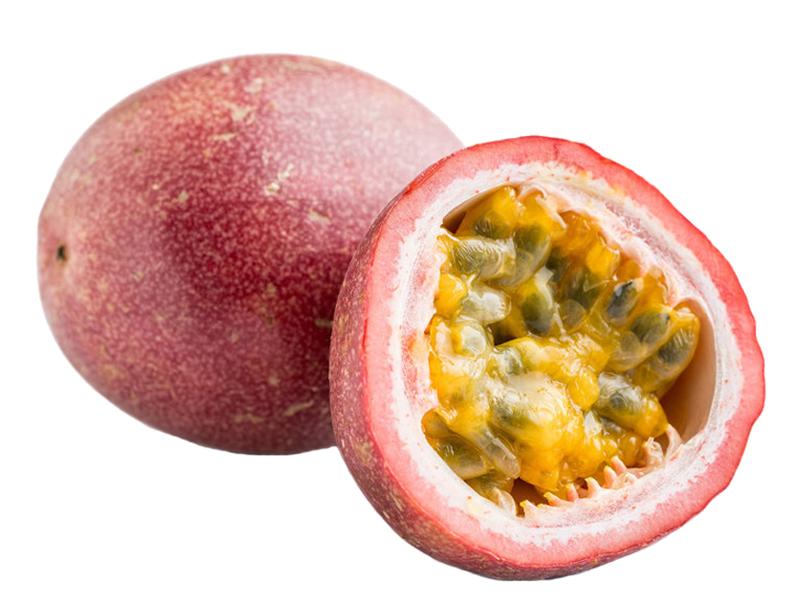
Green Spring Technology leverages supply chain 리 소스 spanning premium growing regions to build a fully traceable system encompassing cultivation, fresh fruit harvesting, and deep processing. Our passionflower powder ingredients earn market trust through these core advantages:
· Traceable Varieties & Origins: Strictly implements a “one fruit, one code” traceability mechanism, ensuring pure varieties, clear origins, and green-compliant cultivation practices;
· Efficient, Authentic Processing: Utilizing low-temperature crushing, instant sterilization, and non-thermal drying techniques to maximize retention 의 passion fruit's natural aromatic compounds and heat-sensitive nutrients;
· Customizable Composition & Versatile Applications: 제품s can be tailored to client requirements regarding fiber content, acidity, and particle size, making them widely applicable in solid beverages, health foods, baked goods, dietary supplements, and more;
· Consistent quality and batch-to-batch uniformity: Standardized pre-processing and comprehensive quality control ensure consistent color, flavor, and nutritional pr의ile across all batches.
Green Spring Technology delivers transparent, reliable, high-quality passion fruit powder ingredients, committed to providing safe, innovative, and clean-label ingredient solutions for food and health supplement companies. We empower our clients to create next-generation health products.
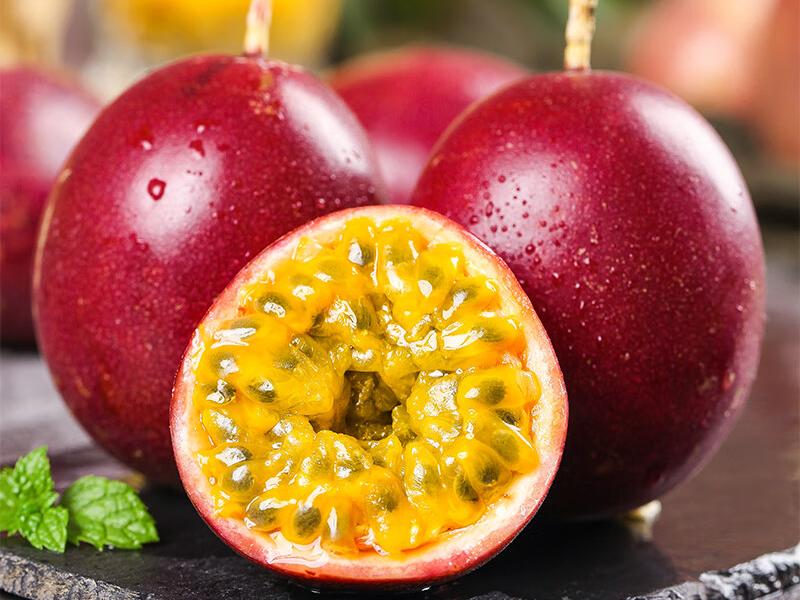
1 Nutritional Analysis: 자연 Components and Health Applications 의 Passion Fruit
Passion fruit pulp and juice are rich in diverse natural nutrients, making them premium healthy ingredients for food and beverage innovation. The pulp contains moderate protein levels, while the seeds boast particularly high protein content comparable to grains like corn and oats, making them suitable for high-protein food development.
Passionfruit boasts abundant amino acids, with over 1,260 mg total amino acids per 100 grams 의 fresh fruit and essential amino acids accounting for more than 23% 의 the total—exceeding the nutritional value of many common fruits. Its carbohydrates primarily exist as soluble sugars like glucose, fructose, and sucrose, providing a natural sweetness source for products.
Regarding vitamins and minerals, passion fruit is a natural source of vitamin C, with purple-fleshed varieties exhibiting significantly higher vitamin C content than yellow-fleshed ones. It is also rich in riboflavin, niacin, and various mineral elements. These natural nutrients make it an ideal choice for developing beverages, nutritional foods, and functional ingredients, supporting clean-label health products.
2 A Whole Treasure: High-Value Applications and Sustainable Solutions for the Entire Passion Fruit
Every part of the passionfruit offers value—에서 pulp and seeds to peel—enabling high-value processing applications that provide diverse natural ingredient solutions for food, health supplements, and cosmetics industries.
Pulp and Juice: Flavor Enhancement and Nutritional Empowerment Passionfruit pulp boasts a distinctive aroma and pronounced sweet-tart profile, serving as a natural flavor enhancer for juices, ice cream, yogurt, jams, and preserves. Purple passion fruit, with its higher acidity, is particularly suited for industrial processing, effectively reducing raw material costs. Modern processing techniques like ultra-high pressure sterilization significantly extend product shelf life while fully preserving nutrients and flavor. In compound beverage development, passion fruit juice pairs well with various fruits and medicinal-food ingredients (such as goji berries and peony root), creating innovative products with harmonious textures and health claims.
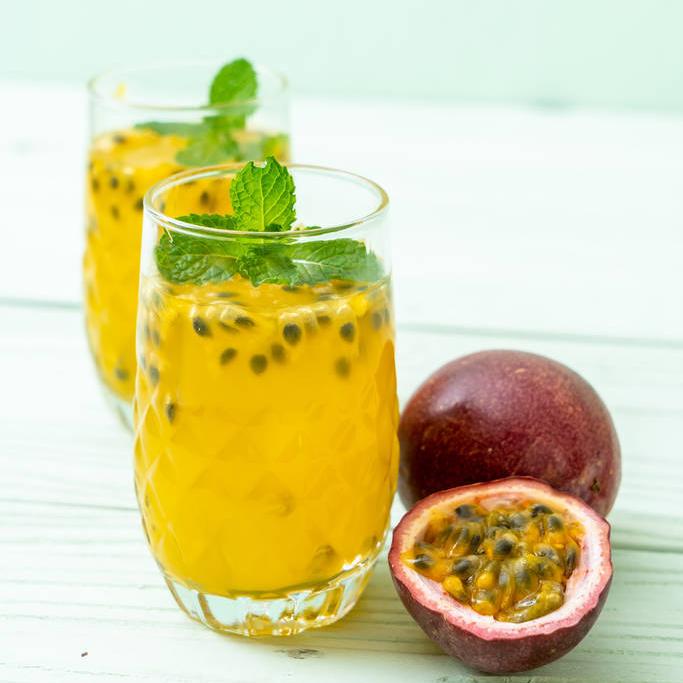
Seeds: New Sources of Protein, Lipids, and Dietary Fiber Passionflower seeds are rich in protein (approximately 13.2% dry weight) and lipids (approximately 14.9% dry weight). Their lipids contain high levels of unsaturated fatty acids, with linoleic acid accounting for nearly 70%, offering excellent antioxidant properties. They are suitable for developing premium edible oils, health-promoting lipids, and functional skincare products. The seeds are also rich in insoluble dietary fiber, making them suitable for weight management and gut health products to enhance fiber content and functional properties.
Peel: A Sustainable Source of Pectin and Functional Compounds The peel constitutes a significant portion of the fruit and was once considered a byproduct. Today, it is recognized as an important source of pectin, dietary fiber, and bioactive compounds. Extracted pectin exhibits superior gelling properties, serving as a viable alternative to commercial pectin in confectionery, jellies, dairy products, and pharmaceutical applications. Additionally, the peel contains compounds like anthocyanins, carotenoids, and GABA, offering development potential in antioxidant and soothing health applications, thereby transforming 에서 “waste” to high-value raw materials.
This whole-fruit utilization 모델 aligns with sustainable and clean-label trends, effectively enhancing resource efficiency while offering food companies an economically viable and functional raw material option.
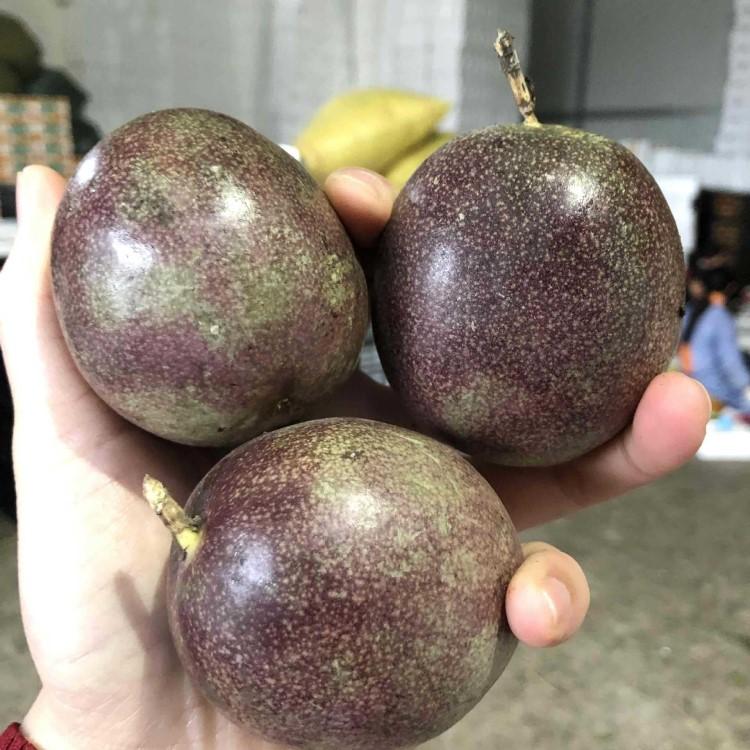
3 Significant Advances in Post-Harvest Preservation Technology Ensure High-Quality Raw Material Supply
Passion fruit exhibits active physiological metabolism post-harvest, resulting in a short shelf life and susceptibility to issues like dehydration and quality degradation—longstanding industry challenges. Recent innovations in preservation technology have significantly enhanced post-harvest quality retention, providing downstream food companies with a more stable and superior raw material source.
Multiple studies indicate that advanced techniques—such as high-oxygen modified atmosphere packaging (e.g., 90% O₂), 1-methylcyclopropene (1-MCP) treatment, and microporous film combined with chitosan coating—effectively suppress fruit respiration rates, slow the loss of nutrients like vitamin C and polyphenols, and significantly extend commercial shelf life. Under storage conditions of 6–8°C, the good fruit rate of passion fruit can remain above 90% for up to 28 days. Certain composite treatment technologies even extend shelf life from 3 days to 12 days at ambient temperatures.
The application of these technologies not only ensures the freshness and flavor stability of passion fruit raw materials but also lays the foundation for maintaining higher active ingredient content during deep processing (such as juice, powder, and jam production), achieving true end-to-end quality control from field to production.
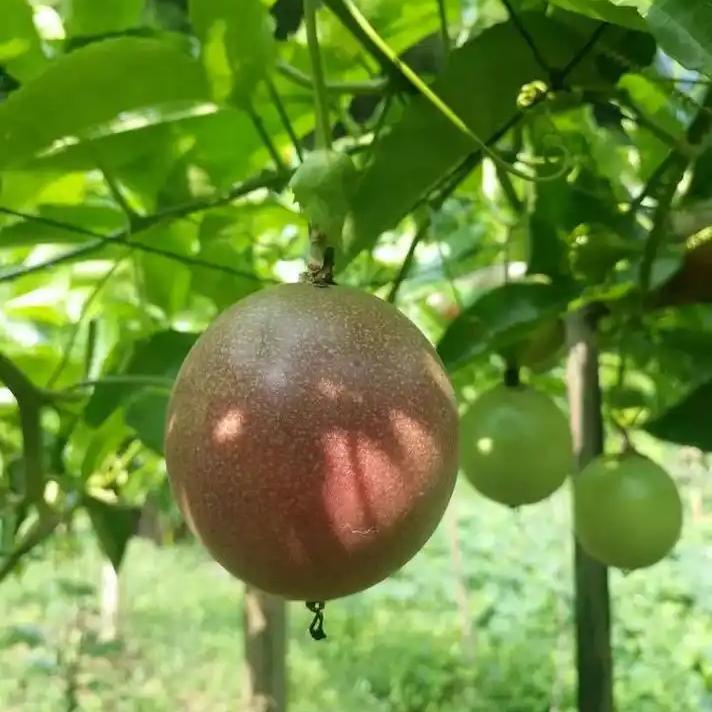
4 The passion fruit industry continues to expand, with China becoming a vital link in the global supply chain
China's passion fruit industry has entered a period of rapid development in recent years, with both 식물ing area and production volume showing significant growth for consecutive years. By the end of 2020, the national planting area had reached 73,000 hectares, annual production exceeded 880,000 tons, and the total annual output value surpassed 8 billion yuan, doubling from the previous year and demonstrating strong market potential and economic value.
Guangxi, Fujian, Guangdong, Guizhou, and Yunnan have emerged as China's core production regions for passion fruit, with Guangxi leading nationally in both cultivation scale and output. Leveraging favorable natural conditions, regions like Yunnan and Guizhou have integrated passion fruit cultivation with rural revitalization initiatives. Models such as “company + cooperative + base + farmers” promote large-scale, standardized production, ensuring stable raw material supply while fostering sustainable economic development in these areas.
Driven by “Internet + e-commerce” and policy support, the passionflower industry chain continues to mature, emerging as a key contributor to agricultural efficiency and farmer income growth in China's warm and subtropical regions. Concurrently, domestic demand continues to expand, with current consumption still partially reliant on imported juice, indicating substantial development potential for local deep processing and high-value-added product development.
The industry is actively addressing challenges in variety selection, seedling standardization, and deep processing capacity enhancement, striving to build a more comprehensive and efficient passion fruit industrial system. This aims to provide food and beverage companies with stable-quality, reliably sourced raw materials.
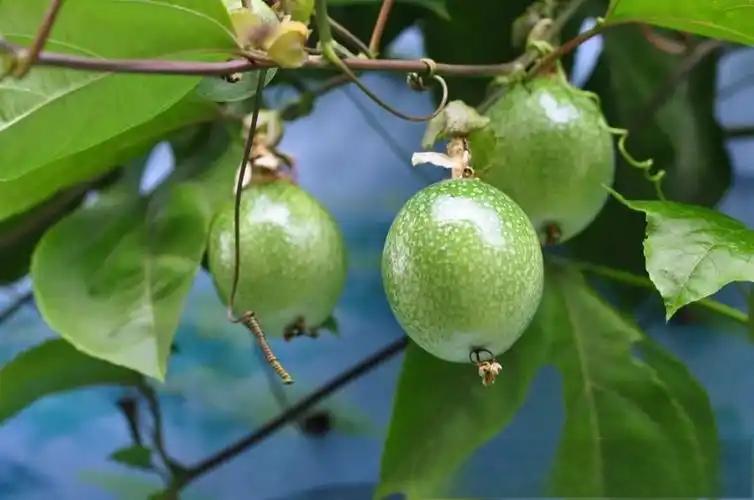
5 Empowering Food & Beverage Innovation: Four Core Values of Green Spring Technology's Passion Fruit Powder
To advance high-quality development in the passion fruit industry, Green Spring Technology leverages its “Orchard to Powder” end-to-end traceability system to deliver stable, efficient, and differentiated passion fruit ingredient solutions for food and beverage companies. This empowers clients to tackle market challenges while achieving product innovation and brand elevation:
· Standardized Raw Materials for Consistent Products: Our proprietary cultivation bases and standardized processing ensure batch-to-batch uniformity in flavor, color, and nutritional content. This reduces development and testing cycles, enabling rapid mass production.
· Clean Label Alignment with Health Trends: Non-thermal processing and low-temperature drying preserve natural bioactive compounds. Pure, additive-free passion fruit powder enhances health claims like “natural,” “high in vitamin C,” and “rich in dietary fiber.”
· Convenient application, reduced overall costs: Powder form facilitates transportation, storage, and formulation, suitable for solid beverages, baked goods, dairy products, confectionery, and functional applications. This effectively minimizes supply chain losses and operational expenses.
· Traceability and transparency to build brand trust: Comprehensive traceability support covering variety, origin, and processing enables companies to craft credible product narratives, enhancing consumer recognition and brand premium potenti알다.
Green Spring Technology is committed to being a trusted passionflower ingredient partner for food and beverage companies. We provide high-quality, customizable passionflower powder products and offer one-stop support from concept to mass production. Contact us for samples and quotation at helen@greenspringbio.com or WhatsApp: +86 13649243917.
참조
[1]CERQUEIRA-SILVA CBM,JESUS ON,SANTOS ESL, et al.Genetic breeding and diversity of the genus Passiflora:progress and perspectives in 분자 and 유전 studies[J]다. 국제 저널 of 분자 Sciences, 2014,15(8):14122-14152.
[2]YUAN ZT,KAO LC,LI JW,et al.Chemical 유권자들 of 잎 of Passifloraedulis[J]. 화학 of 자연 Compounds,2017,53(6):1165-1166.
[3]HU Y,JIAO L,JIANG MH,et al.A 새로 운 C-glycosyl flavone and a 새로 운 neolignan glycoside from Passifloraedulis Sims peel[J]. Natural Product 연구,2018,32( 19): 2312-2318.
[4]HE X,LUAN F,YANG Y,et al. Passifloraedulis:an insight into current researches on phytochemistry and pharmacology[J]. Frontiers in Pharmacology,2020( 11):1-16.
[5]ROYAL BOTANIC GARDENS,KEW,MISSOURI BOTANICAL GARDEN.The plant list[DB/OL].[2023-0411].http://www.theplantlist.org/ .
[6]ZUCOLOTTO SM,GOULART S,MONTANHER AB,et al.Bioassay-guided isolation of 항 염증 C-glucosylflavones from Passifloraedulis.[J]. Planta Medica, 2009,75( 11):1221-1226.
[7]CAZARIN BBC,RODRIGUEZ-NOGALESA,ALGIERIF, et al.Intestinal 항 염증 효과 of Passiflora edu lispeel in the dextran 나트륨 sulphate model of 마우스 대장 염 [J]. 저널 ofFunctional Foods,2016(26):565-576.
[8]Zhang Rulian, 가 오 Ling, Tan Yunhong, et al. Research and utilization of passion flower germplasm resources [M]다. 베이징: China 농업 언론, 2014.
-
Prev
Passionflower Extract for Your Emotional Wellness Product Formulation
-
다음
Green Spring Technology Passionflower Extract - Fully Traceable & Compliant


 영어
영어 프랑스
프랑스 스페인
스페인 러시아
러시아 한국
한국 일본
일본



